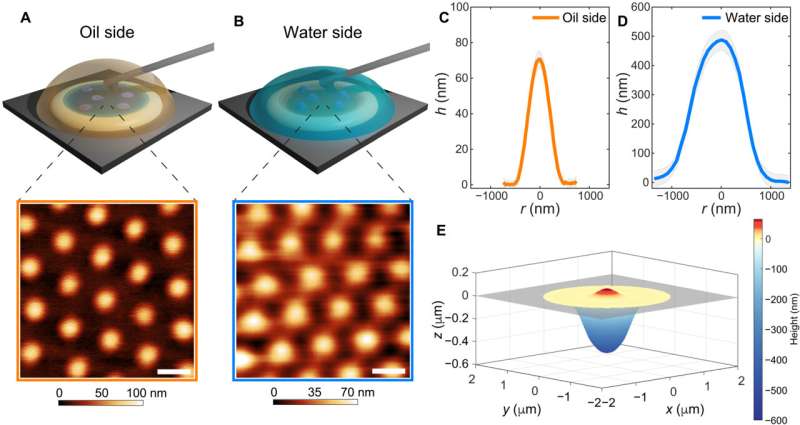Fluid interfaces deform soft particles

Researchers in the Laboratory for Soft Materials and Interfaces show a new atomic force microscopy method to image the full 3D shape of soft particles adsorbed at fluid interfaces.
Soft hydrogel particles, also known as microgels, are promising building blocks for functional materials owing to their response to environmental stimuli, such as pH, temperature, light and compression.
In particular, they have shown impact in the stabilization of emulsions and foams and as elements for the micro-patterning of surfaces. At the core of these aspects lies their softness, i.e. their ability to reconfigure their shape under different conditions, especially at fluid interfaces, where interfacial tension can deform them.
So far, a full in-situ reconstruction of the 3D shape of microgels adsorbed at oil-water interfaces remained elusive. Two postdocs in the group of Prof. Isa, Dr. Jacopo Vialetto and Dr. Shivaprakash Ramakrishna, have applied quantitative atomic force microscopy imaging to resolve the full 3Dshape of different types of microgels at different interfaces and temperatures.
The results show an unprecedented degree of insights in the conformation that these particles take upon interfacial adsorption and reveal new aspects of the design of soft particles as stabilizers.
The research was published in Science Advances.
More information: Jacopo Vialetto et al, In situ imaging of the three-dimensional shape of soft responsive particles at fluid interfaces by atomic force microscopy, Science Advances (2022). DOI: 10.1126/sciadv.abq2019
Journal information: Science Advances
Provided by ETH Zurich





















